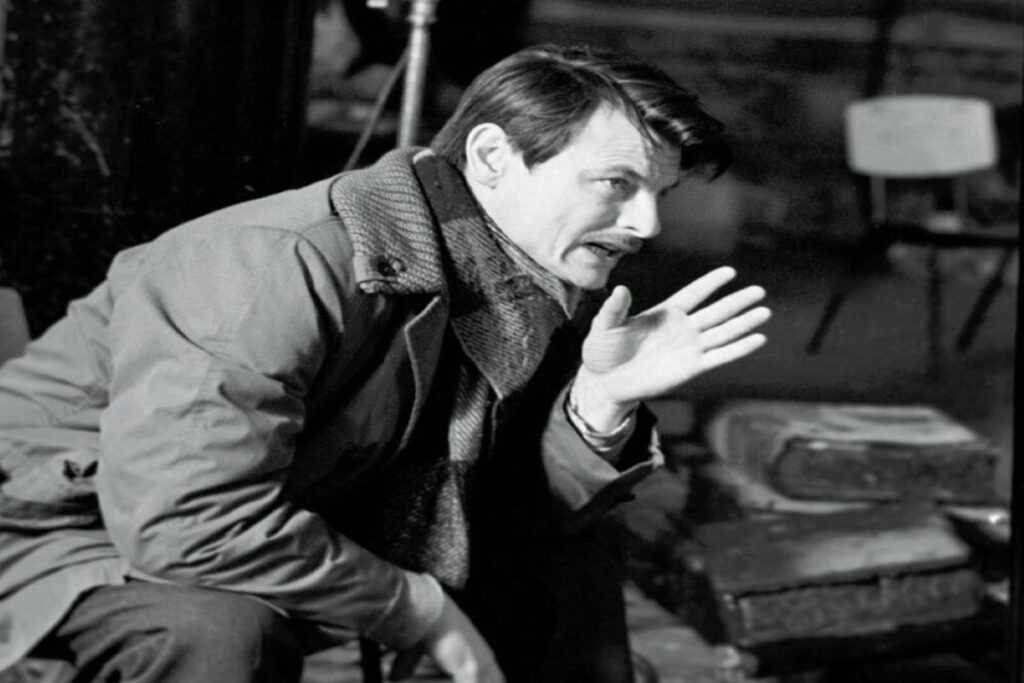Andrei Tarkovsky is widely considered one of the greatest and most important filmmakers in the world. He was a Soviet Russian filmmaker who studied film direction at the State Institute of Cinematography (VGIK). He made seven feature films in his life out of which five films were made in Soviet Russia. However, his relationship with the Soviet censor board was always strained that forced him to leave his motherland forever in 1979. He made his penultimate film Nostalghia in Italy and the last film of his life The Sacrifice in Sweden. He passed away in 1986 in Paris.
Tarkovsky never believed in conventional storylines, plot developments, and commercial gimmicks of cinema. So, his films are just not the accumulation of facts and figures but deal with spiritual, metaphysical, psychological, and philosophical themes and ideas that question the basic purpose of human existence. His films largely highlight the spiritual and identity crises of human beings and he always envisioned films that vouch for self-esteem, self-belief, and soul searching. Great Ingmar Bergman rightly pointed out “Tarkovsky for me is the greatest. The one who invented a new language, true to the nature of the film, as it captures life as a reflection, life as a dream.”
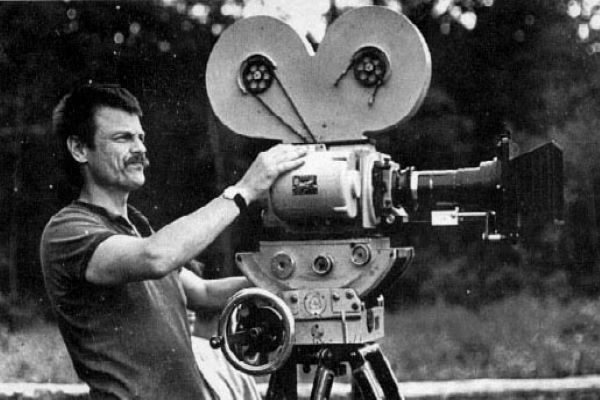
Spiritual and Metaphysical Themes:
Tarkovsky was never a fan of mundane materialistic life. Money, wealth, comfort, and artificiality were never parts of his world. His world was made of love, peace, happiness, sacrifice, relationships, and most importantly spiritual fulfillment of human beings. He strongly questioned human existence and despised heartless scientific advancements. The shallowness of human behavior and psyche are highlighted in his films. Multiple times, his characters suffer from spiritual and identity crises. As an artist, he went as far as possible to comprehend the true nature of the human soul. So, his films largely deal with spiritual and metaphysical subjects.
In Stalker, Tarkovsky shows that humans exist in this world with an array of desires without knowing the innermost one. They chase dreams and fantasies forgetting their near and dear ones. However, without knowing the basic purpose of life, they get encircled and trapped again and again. They lose hope and life seems to be futile and worthless. The same situation happened to Porcupine as well. When he could not save his brother, he increasingly felt guilt-ridden and committed suicide. The Stalker tells his wife that nobody has the faith to enter the Room. Tarkovsky’s deeply soul-searching film Stalker portrays the helplessness and suffering of humans who have lost their self-respect. Their identities have been severely crushed by their disbelief. The film vividly points out the spiritual crisis of humans in the modern world.
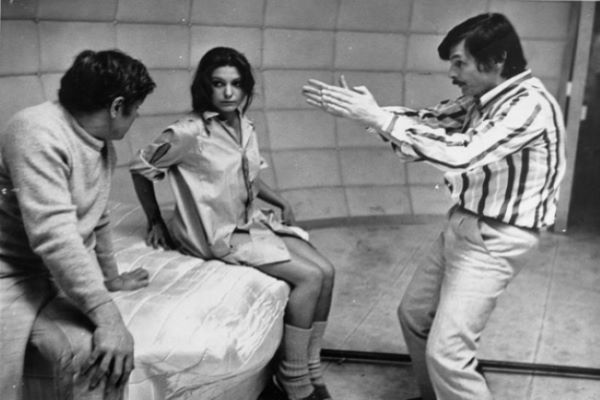
Stalker vividly shows how painful a spiritual crisis is. When humans lose self-belief and self-esteem, the suffering is enormous. They tend to overlook happiness and satisfaction within themselves and chase those in an unknown world. It looks similar to chasing a mirage in an oasis. In the end, neither the Writer nor the Professor has the courage to enter the room. The Writer clarifies that nobody in this world is aware of their innermost desire. A desire that is deemed innermost may not be the same. So, humans lack the confidence and courage to face the reality.
Porcupine was not aware that his innermost desire was to be wealthy. So, when he tried to save his brother, his desire was not granted. The film largely points out the shallowness of human lives. Nobody is happy because they are not content with themselves. Selfish motives always bring a vacuum to the soul. Life is filled with both happiness and grief, anger and peace, and gain and loss. One cannot expect only positives and wipe out the negatives. The world is full of good and bad, holy and evil. When humans are fortunate enough to have all the worldly blessings, they are too busy chasing the mirage. The Zone does not mean anything. Our fates lie in our hands. Whether humans will be able to find out love, compassion, happiness, and other basic emotions, depends on them.
Andrei Tarkovsky’s classic film Solaris is a science fiction film but mostly raises questions about human existence and consciousness. Tarkovsky was never interested in space exploration or research. Using the science fiction setup, he tried to portray human memories, emotional depth, and the language of love. More than the alien world, he was interested to capture the human existential crisis in space. So, Solaris is not just a science fiction film, but a film that acts as a mirror to mankind. The film raises multiple important questions – what makes a human? What is the true nature of human love? How are humans in space detached from reality? Can logic supersede human emotions? Through Solaris, Tarkovsky largely hails and celebrates life on Earth and questions the repercussion of scientific advancements in space research. No matter how much scientific progress we make, he despises artificial, mechanical, and robotic forms of life.
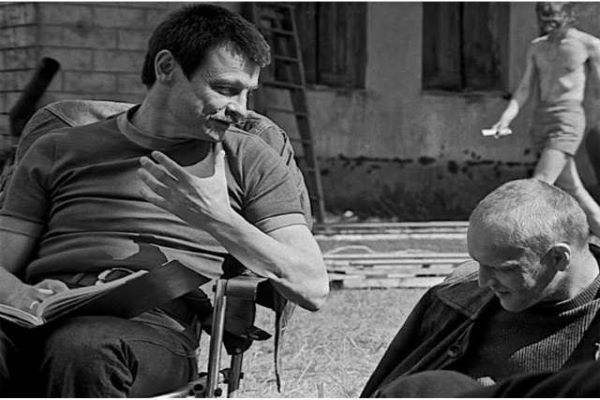
The central theme of Tarkovsky’s films is the spiritual fulfillment of humans. Nostalghia is not an exception. Andrei is alienated, in terrible shape, and suffering from a spiritual crisis. Andrei crosses the pool with the lighted candle and then dies. But, why does he die? Does he die only because of illness? When a man loses faith and conviction in himself, he loses the meaning of his life, and there is nothing left in him apart from death and madness.
Like all his films, The Sacrifice also deals with the deep philosophical concepts of spiritual awakening, journey, and fulfillment. The protagonist of the film Alexander (Erland Josephson) prays to God so that the world is not destroyed by the nuclear war, and in exchange for that, he is ready to sacrifice everything that he has including his house and his beloved son named Little Man. He does not even step back from sleeping with his housemaid Maria. In the end, he does everything that he promised to do in order to save the world from the apocalypse. The Sacrifice is a poetic parable that marks the supreme sacrifice of a human being to save this world. When the advancement of science and technology miserably fails to ensure the safety and well-being of this world, an ordinary man alone shoulders the onus.
Long Takes:
Like Antonioni, Tarkovsky also believed in films that dwell on the present moment, and he never focused much on story or plot development. So, he preferred long takes so that continuous moments and images of life can be captured on the screen. That is the basic purpose of cinema. Through slow-motion tracks and pans, Tarkovsky’s meditative shots create a mystic and spiritual world in Mirror. Using long takes, Tarkovsky captures the quintessential rhythms of time. His meditative camera slowly but continuously and smoothly moves through the spaces. With the passage of time, viewers very much become part of his mystic dream world.
Stalker is a continuous film almost without any time-lapse. Tarkovsky wanted time and its passing to be revealed in each frame. He did not want any jump or manipulation of time so that the entire film looks like a single shot. With the continuity of time, he wanted to portray that cinema can very well observe life and that is the true essence of poetic cinema. There is no surprise that the entire film has only 142 shots. Solaris contains a very long take of almost 5 min duration in which the retired astronaut Burton drives along a street in Tokyo, Japan. This take with artificially generated chaotic sound is then cut to Kris’ serene countryside. Through this long take, Tarkovsky differentiates between artificial and natural forms of life. The Sacrifice also contains a very long take in which the protagonist Alexander sets his house on fire to fulfill his commitment to the beloved Lord while his family members and victor are a little away from the house, and then watches it from a distance and runs abnormally.
Lack of Conventional Narrative Structure:
Tarkovsky never believed in conventional storylines, plot developments, and commercial gimmicks of cinema. So, his films are largely devoid of unnecessary dramas and dialogues. Rather than mere facts, he invented a new language of cinema that dwells in the present moment and observes his characters and their surroundings. Mirror lacks proper narrative structure and flows through three time periods in the life of the protagonist named Alexei (Filipp Yankovsky, Ignat Daniltsev, Innokenty Smoktunovsky-voice) who is the alter ego of the filmmaker himself. Those time periods are before World War 2, during the war, and after the war. The enigmatic and unconventional screenplay by Aleksandr Misharin and Tarkovsky may not have a proper narrative structure but is strong enough to portray Alexei’s life and his world. Nostalghia is largely devoid of any dramatic plot apart from very few instances like the conversation between Andrei and Eugenia, Domenico’s speech in Rome, and Andrei’s repetitive attempt to cross the pool with the lighted candle.
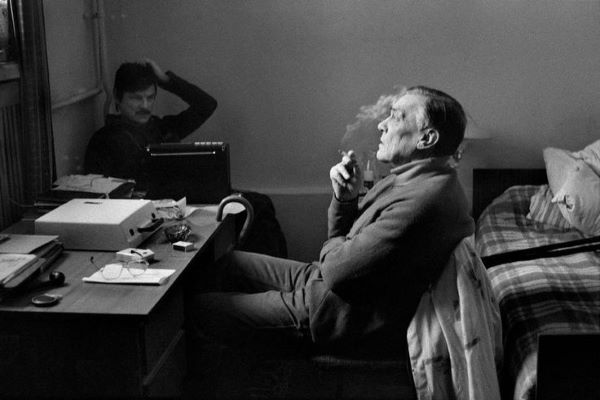
Distinct Cinematography:
Tarkovsky’s films are filled with mystic, enigmatic, meditative, and slow-motion pan and track shots mostly surrounding the magnificent views of natural beauty. Multiple times, he favored wide-angle and panoramic long shots. In Mirror, through slow-motion tracks and pans, his meditative camera slowly but continuously and smoothly moves through the spaces and creates a mystic dream world. Each frame in Mirror looks like a painting. In Ivan’s Childhood, through a heartwarming and emotional flashback, his camera captures Ivan through a parallel track shot running on the beach behind his sister in his jubilant past. In The Sacrifice, cinematographer Sven Nykvist plays with lights and shadows throughout the film. Absolute silence and mystery creep in during the night. Nykvist’s magnificent cinematography captures the phenomenon of the mystic night.
In Nostalghia, cinematographer Guiseppe Lanci plays with lights and shadows in multiple scenes. When Eugenia enters Andrei’s room, at first, she appears in the darkness, and then her face is lit. The scene when Andrei closes himself in the hotel room during the heavy downpour is largely covered in shadows. The foggy Tuscan hilly areas look magical. The last shot of Nostalghia establishes Tarkovsky’s mastery as an artist as well as a filmmaker. In this shot, Tarkovsky brings the magnificent Russian countryside inside the Italian abbey church of Saint Galgano. This acts as a metaphor to portray Andrei’s current state of mind. Despite staying in Italy, his heart is filled with the memories and dreams of his motherland. At this moment, his life is divided and confused, which bars him from spiritual fulfillment. Through this constructed image, Tarkovsky depicts the divisions and confusions within humans as a whole and Andrei is not just a separate example.
Memories, Dreams, and Reflections:
Andrei Tarkovsky painted his life on the canvas of memories, dreams, and nostalgia in his deeply personal and autobiographical film Mirror. Tarkovsky’s Mirror is one of the most beautiful films ever made. We never forget our childhood days. Those are always colorful and filled with innumerable memories that beckon us in different phases of life. All artists get influenced and impacted by those memories. It is not a surprise that their works get illuminated by those precious, beautiful, and melancholic memories. Tarkovsky is not an exception. His memories are deeply attached to the country house of his grandfather in rural Russia about 300 km from Moscow. That is the house where he spent much of his childhood after getting evacuated from Moscow during World War 2. He deeply loved the serene rural atmosphere. All the natural elements like wind, dew, snow, fire, and water are quintessential parts of his films. His father served in the Russian Military, and his mother used to wait for a long time for his father.
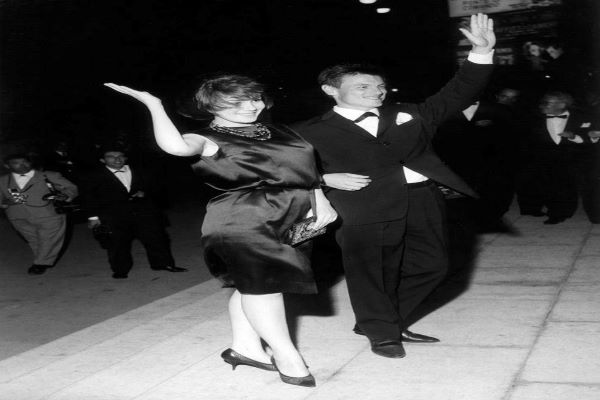
Ivan’s Childhood shuffles multiple times between reality and dreams. It starts with a dream sequence where a twelve-year-old boy named Ivan (Nikolai Burlyayev) looks at spiderwebs in a tree, walks through the woods, chases a butterfly, and then drinks water from a bucket that his mother has kept. Young Ivan listens to the tune of a cuckoo and tells her mother, “Mama, there is a cuckoo”. In the 2nd dream sequence, the scene starts with water dropping from asleep Ivan’s hand in the Soviet army quarter and then the camera focuses on Ivan and his mother looking down at a well from above. Then, Ivan sees a star in the water of the well. In the same scene, Ivan is shot from above and below. In the 3rd dream sequence, the screen turns whitish but only the sky is black. In the 4th dream sequence, Vadim’s camera follows Ivan in a parallel track shot on the beach. The entire film is filled with multiple innovative shots, which follow Tarkovsky’s cinematic language.
Ivan’s Childhood is deeply influenced by Tarkovsky’s own childhood. Much like Ivan, his childhood too was spent during World War II. His family was evacuated from Moscow, and they took shelter at his maternal country house 300 km away from Moscow. All the dream sequences are directly taken from his childhood. Listening to the tune of cuckoos, walking across the birch woods, spiderwebs on the birch trees, camouflage of birch branches on the first-aid posts, wet horses steaming in the sunshine, a lorry full of apples, running after his sister across the beach, and playing hide and seek on the beach are all directly taken from his own life.
Tarkovsky’s classic film Solaris shows that science cannot wipe out our past life and memories. As humans, we will always be beckoned by our past life. That Solaris is creating the replicas of humans based on our memories is a metaphor that no matter how much logical we are or advanced in science, basic human emotions like love, past life, memories, and relationships cannot be erased from our life. We will deeply long for those. Hari’s disappearance shows how deeply and desperately we need them in life.
Nostalghia is about the memories, dreams, and nostalgia of a Russian poet temporarily living in Italy. However, he does not know the specific time of his return to his motherland. Much like Tarkovsky himself, the poet sinks into deep nostalgia, alienation, and melancholia, and eventually dies in Italy. In his lifetime, he is not able to return to his beloved motherland again. The scenes wherein Tarkovsky remembers his family members down the hilly Tuscan countryside are shot so beautifully by cinematographer Guiseppe Lanci that they look exactly like a dream.
Tarkovsky believed that mysterious blurring is not the way to achieve a true film impression of dreams or memories. The cinema is not, and must not be, concerned with borrowing effects from the theatre. What then is needed? First of all, we need to know what sort of dream the character has. We need to know the actual material facts of the dream. The most interesting or frightening dreams are the ones where we remember everything down to the minutest detail.
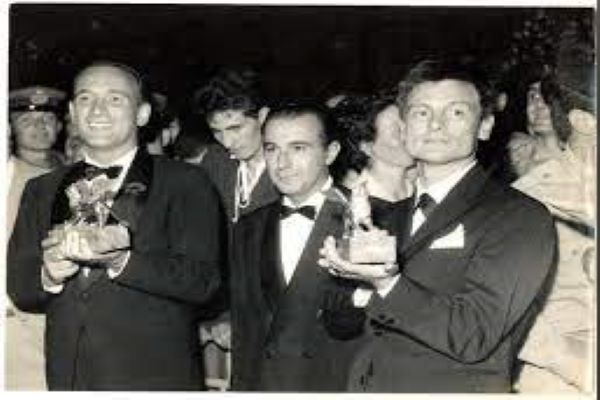
Use of Nature and Its Elements:
Tarkovsky deeply loved the serene rural atmosphere. All the natural elements like wind, dew, snow, fire, and water are quintessential parts of his films. In Mirror, Alexei, his mother, and his sister stand by and watch when the family barn is set on fire. In Andrei Rublev, snowflakes keep falling upon the ransacked and massacred church. In Ivan’s Childhood, Ivan swims across a river and runs after his sister on the sea beach. Tarkovsky uses water in multiple scenes in Stalker. Solaris is all about the celebration of life and nature on Earth. Tarkovsky shows that the colors and vigor of life and nature are eternal and can never be forgotten even if humans cross the boundaries of earth and reaches some other planets. Gibarian missed earth and nature deeply and made a paper strip and attached that to the air ventilators. Snaut still uses it and Sartorius, though he initially mocked it, uses it hidden. Solaris features multiple shots of the magnificent natural beauty in Kris’ serene countryside.
In Nostalghia, the scenes wherein Tarkovsky remembers his family members down the hilly Tuscan countryside are shot so beautifully by cinematographer Guiseppe Lanci that they look exactly like a dream. In The Sacrifice, Alexander does not forget his commitment to the beloved Lord. While his family members and victor are a little away from the house, he sets it on fire, watches it from a distance, and runs abnormally. Tarkovsky didn’t like big cities and felt perfectly happy when he was away from the paraphernalia of modern civilization, just as he felt wonderful in Russia when he was in his grandfather’s country house, with three hundred kilometers between Moscow and himself. Rain, fire, water, snow, dew, the driving ground wind—all are part of the material setting in which we dwell and the truth of our lives.
Creation of Worldly Characters:
Tarkovsky always created characters who are deeply rooted in this world. His characters grow up amidst enormous natural beauty and the surroundings become an integral part of their lives. It plays a very important role in their behavior and psyche. Tarkovsky himself was always deeply rooted in this world. So, it is not a surprise that his characters are deeply rooted in this world as well. Alexei is deeply attached to his country home in Mirror. The monastery is an integral part of Andrei’s life in Andrei Rublev. Ivan has seen the murders of his family members in Ivan’s Childhood. So, it is not a surprise that he is charged up for revenge.
In Nostalghia, Andrei suffers from homesickness for his beloved motherland. In Stalker, the Stalker risks his own life to take the writer and the professor to the zone. In The Sacrifice, Alexander is ready to sacrifice everything that he has in order to stop the nuclear war. Tarkovsky’s characters dwell in this world and the world very much becomes a very important part of their lives. He said, “Juxtaposing a person with an environment that is boundless, collating him with a countless number of people passing by close to him and far away, relating a person to the whole world: that is the meaning of cinema.”
Use of Levitation:
One of the most important and powerful cinematic features of Andrei Tarkovsky’s films is the use of levitation. Levitating Maria in Mirror is one of the most powerful images in cinema history. There is a levitation scene in Solaris as well when Kris and Hari embrace each other and float inside the space station. These levitation scenes are famous for their photogenic values and magical inexplicability.
Avoidance of Color:
Tarkovsky was never a fan of using color in films. He believed that viewers do not consciously notice color in films. So, his films are filled with many black and white and sepia shots. The childhood flashbacks of Alexei are shot in sepia in Mirror. Ivan’s Childhood is entirely shot in black and white. Andrei Rublev is almost entirely shot in black and white apart from Rublev’s paintings in the epilogue. Stalker is largely shot in sepia. Even though Tarkovsky used color in his films, those colors are mostly subtle and not extensively bright.
Use of Nature as Omen:
Tarkovsky’s camera captures not only the immense beauty of nature but also the ominous presence of natural forces. His films multiple times portray the helplessness and vulnerability of human beings. Snowflakes falling down upon a ransacked church, dense fog, ruined and decaying buildings, isolated rural homes, dusty wind whistling through trees, dripping water, and rains falling down in an empty house are some of the shots through which Tarkovsky portrays the mysterious forms of nature and its impact on human lives. Through these shots, Tarkovsky clearly shows the inseparable relationship between humans and nature. Human suffering and trauma can be reflected and depicted in the omnipresent forces of nature. Human existence is not aloof. So, it is quite obvious that the threads of human lives are deeply interlinked with the surroundings they dwell in.
Tarkovsky – A Portraitist:
Tarkovsky is one of the greatest portraitists in the history of cinema. If any frame of his films is captured, it forms a beautiful portrait. The emotions of his characters are depicted in the close-ups. His camera mercilessly probes his characters and captures their innermost feelings. So, his films are always full of life.
Poetic Cinema:
Tarkovsky was not okay with the contemporary concept of poetic cinema. He believed that unnecessary allegories and symbols are ingested into films in the name of poetic cinema. Like Antonioni, he was a strong believer in making films based on the rapt observation of the present moment, instead of making plot-driven films, which are mostly based on what will happen next. So, his films usually have very long takes. As per Tarkovsky, if the director finds connections and gets impacted by the landscape, it will in turn impact the viewers as well. Establishing a character in the surrounding is the true meaning of poetic cinema.
Use of Famous Medieval Paintings:
Tarkovsky was fascinated by the works of famous medieval painters like Leonardo Da Vinci, Pieter Brueghel the Elder, Albrecht Durer, and Vittore Carpaccio. He believed their paintings deeply portray Russian people and culture. So, quite naturally, their paintings are featured in his films. Those paintings depict the central themes of his films with finesse. Peter Brueghel the Elder’s famous painting The Hunters in the Snow is featured both in Mirror and Solaris. His Four Seasons series is featured in Solaris. Leonardo Da Vinci’s A Young Lady with a Juniper and an old folio that contains Beautiful Ferronera, The Virgin and Child with St Anne, The Adoration of the Magi, and Mona Lisa, are featured in Mirror.
The Adoration of the Magi is featured as the central theme in The Sacrifice. Andrei Rublev’s Birth of Christ, Lord’s Entry into Jerusalem, Twelve Apostles, The Annunciation, Christ Enthroned in Glory, Transfiguration, Christmas, and The Trinity are featured in the epilogue section of Andrei Rublev. The Trinity is featured in Solaris as well. Albrecht Durer’s The Four Horsemen of the Apocalypse, Portrait of Ulrich Varnbuler, and Knight, Death, and the Devil are featured in Ivan’s Childhood. The famous fresco Madonna Del Parto by Piero Della Francesca is featured in Nostalghia. Paintings and cinema are immensely connected to each other even though they are two distinct forms of art. Much like Tarkovsky’s films, paintings too efficiently and deeply depict human culture, emotions, behavior, philosophy, and psychology.
Music:
Tarkovsky used classical music by music icons like Bach and Beethoven and electronic music by contemporary musicians like Eduard Artemyev and Vyacheslav Ovchinnikov. In Mirror, he used Bach’s soulful and melancholy music and Eduard Artemyev’s slow-paced electronic score. In Andrei Rublev and Ivan’s Childhood, he used remarkable nostalgic and melancholy scores composed by Vyacheslav Ovchinnikov. Beethoven’s Symphony No. 9 was included in Stalker. Tarkovsky wanted a combination of eastern and western music for composing the background score of Stalker. After a series of research, Artemyev finally used a combination of the tunes of flute, tanpura, and Azerbaijani tar. The tunes were moduled significantly to form a single string.
In Solaris, Tarkovsky used Johann Sebastian Bach’s soothing and melancholy music for the countryside scenes, but Eduard Artemyev’s terrifying electronic music for the space scenes. The same emotion is reflected in the romantic scene when the space station loses gravity, Kris and Hari are floating and embracing each other, and Bach’s music is playing in the background. Then, it is cut to Kris’ childhood in the tranquil countryside. After that, it slowly dissolves into the terrifying view of Solaris and haunting electronic sound. In multiple ways, Tarkovsky differentiates the beautiful life from the artificial one.
In Nostalghia, Beethoven’s Symphony No. 9 resonates with the scenes when Andrei visits Domenico’s house and Domenico delivers a philosophical, emotional, and very important speech in Rome. In The Sacrifice, J.S. Bach’s aria Have Mercy, My God from St. Matthew Passion used in the first and last scenes resonates with the melancholia of the film. However, Tarkovsky wanted to mix up music and sound so that their existences can not be differentiated. Tarkovsky believed that music is not a mandatory requirement for films and can be replaced by sound.
Use of Poems:
Andrei Tarkovsky was deeply inspired by his father Arseny Tarkovsky. It is not a surprise that the father’s life and works are reflected in his son’s films. So, quite naturally, a few of his father’s poems are featured in his films. Arseny Tarkovsky’s poems create intense poetic rhythms in Andrei Tarkovsky’s poetic films. Four poems by Arseny Tarkovsky are featured in Mirror and he himself recites those poems. Those are First Meetings, In the Morning I Waited for You Yesterday, Eurydice, and Life, Life. Much like Andrei Tarkovsky’s films, Arseny Tarkovsky’s poems also highlight the depth of human relationships, love, spirituality, and soul-searching. Two of his poems are featured both in Stalker and Nostalghia. In Stalker, the Stalker recites Arseny Tarkovsky’s poem There Has to Be More. Just before the end of Stalker, Andrei Tarkovsky uses Fyodor Tyuchev’s poem How I Love Your Eyes, My Friend. Arseny’s poems find a very deep connection to Andrei’s films. Those poems match and intensify the mood, emotion, and rhythm of the films.
Religion:
Tarkovsky was a great believer in orthodox Christianity. So, his orthodox Christian ideologies are reflected in his films. Obviously, it did not go well with the communist soviet government. Multiple times throughout his filmmaking career, he had differences with the contemporary soviet government. The differences were so intense that he had to leave his beloved motherland in 1979. He made his penultimate film Nostalghia in Italy and the final film of his life The Sacrifice in Sweden. His film Andrei Rublev is entirely influenced by orthodox Christianity and shows a significant portion of the great Russian painter’s life inside the Andronikov Monastery.
In Nostalghia, Tarkovsky brings the magnificent Russian countryside inside the Italian Abbey Church of Saint Galgano through an amazingly constructed image. The Sacrifice is based on the Christian faith in sacrifice. Mirror features Leonardo Da Vinci’s famous painting The Virgin and Child with Saint Anne. His other famous painting The Adoration of the Magi is featured both in Mirror and The Sacrifice. Piero Della Francesca’s iconic fresco Madonna del Parto is featured in Nostalghia. From childhood days throughout his life, Tarkovsky was deeply influenced and impacted by orthodox Christianity. So quite naturally, it became a part of his life and filmmaking journey. Tarkovsky was buried in Paris and his epitaph reads – “The Man Who Saw the Angel”.
Human Emotions:
The most striking phenomenon of Tarkovsky’s films is the expression of deep human emotions. His films are soulful and spiritual. Basic human emotions like love, faith, hope, sorrow, joy, longing, nostalgia, frustration, anger, sacrifice, peace, etc, are a very important and inseparable part of his films. Mirror is deeply inspired by his own life. The great Russian painter Andrei Rublev’s life is portrayed in Andrei Rublev. In Ivan’s Childhood, Ivan is charged up for revenge. Human love is celebrated and hailed in Solaris. Human faith is depicted in Stalker. Longing and nostalgia is the theme of Nostalghia. In The Sacrifice, Alexander is ready to sacrifice everything that he has including his son Little Man in order to stop the nuclear war. Moreover, Tarkovsky’s films are always full of optimism. No matter how badly humans suffer because of the lack of faith or spirituality, he is always hopeful of healing. He always envisioned a soulful brighter future not only for Russia but also for the entire world. In the truest sense, Tarkovsky was and will remain one of the most important, humane, and universal filmmakers forever.
